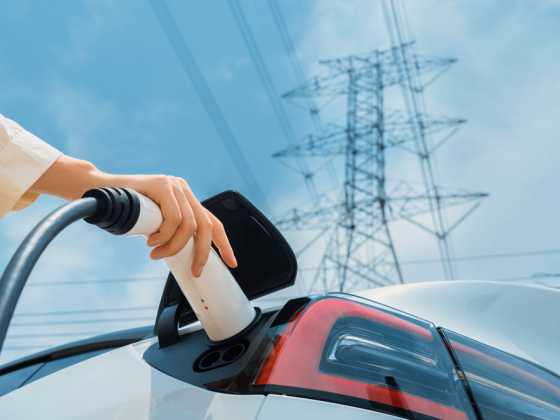Swiss Stars
Electric, hybrid, fuel-cell, alternatively-fuelled and conventionally‑fuelled vehicles all had starring roles to play at the recent Geneva Motor Show.
 With over 670,000 attendees, the 2014 Geneva motor show brought in the crowds to the first major European motor show of this year. The 84th running of the event ran from March 6-16, and featured 900 vehicles on show, a test track for electric cars, and a Green Pavillion for cars which emit 95g/km or less.
With over 670,000 attendees, the 2014 Geneva motor show brought in the crowds to the first major European motor show of this year. The 84th running of the event ran from March 6-16, and featured 900 vehicles on show, a test track for electric cars, and a Green Pavillion for cars which emit 95g/km or less.
Here are GreenFleet’s highlights.
Electric vehicles BMW i3 and i8
BMW i3 and i8
The premium German car maker once again displayed its latest i3 and i8 electric vehicles, both of which are on sale to the public. The i8 sports car premiers laser lighting technology.
Italdesign Giugiaro Clipper Concept
Volkswagen-owned design house Italdesign Giugiaro unveiled an innovative six-seater MPV in Switzerland. Called the Clipper, the four-wheel drive concept has an twin-motor electric powertrain and a potential range of 335 miles. Front butterfly doors and rear gullwing openings contribute to the striking looks, while a floating tablet touchscreen can move between the three rows of seats.
Kia Soul EV Debuting in Geneva, the Kia Soul EV is the Korean company’s first globally‑sold electric production vehicle. Distinguished from regular Souls by its two-tone colour scheme, unique front and rear bumpers and LED tail lights, the car also features a higher-quality interior with additional EV-only displays. The Soul EV is powered by an 81.4kW, 258Nm electric motor with 27kWh lithium-ion polymer battery pack. Range is said to be around 124 miles (200km).
Debuting in Geneva, the Kia Soul EV is the Korean company’s first globally‑sold electric production vehicle. Distinguished from regular Souls by its two-tone colour scheme, unique front and rear bumpers and LED tail lights, the car also features a higher-quality interior with additional EV-only displays. The Soul EV is powered by an 81.4kW, 258Nm electric motor with 27kWh lithium-ion polymer battery pack. Range is said to be around 124 miles (200km).
The Soul EV will come with Kia’s impressive 7-year, 100,000 mile warranty.
 Nissan e-NV200
Nissan e-NV200
The Nissan eNV-200 combines the electric technology from the Nissan LEAF and the versatility of the NV200 van in one package. The all-electric e-NV200 has a 105-mile (170km) range and is CHAdeMO quick charge compatible (0-80 per cent in 30 minutes). A re‑engineered chassis with a second‑generation 80kW AC synchronous motor, interior revisions, a new battery pack, a higher capacity regenerative braking system and other modifications will make the e-NV200 better suited as a city-based delivery vehicle. The eNV-200 goes on sale in June.
Hybrid vehicles
Kia Optima Hybrid
Korean company Kia debuted the refreshed Optima Hybrid in Switzerland. The car features different front and rear bumpers as well as new wheel designs.
Available only in left-hand drive (as previously), the new Optima Hybrid will be fitted with a touchscreen interface specific to the hybrid system, and Kia’s third-generation regenerative braking set-up. E Continued on page 37
The 2.0-litre engine and 35kW electric motor produce a combined output of 175bhp at 5,500rpm and 319Nm of torque. Fuel economy of 56.4mpg (5.1l/100 km) and 119g/km CO2 emissions are expected. Kia also previewed future powertrain technologies with an all‑new mild hybrid system which combines zero‑emissions urban motoring with an electric supercharger for greater performance.
Volkswagen Golf GTE Volkwagen’s new Golf GTE is a plug-in hybrid with, the company says, ‘the dynamics of the Golf GTI.’ Two engines – a 1.4-litre 148bhp direct-injection petrol engine and a 100bhp electric motor – produce combined power of 202bhp and a theoretical range of around 580 miles. Torque is 350Nm/258lb ft). A provisional combined cycle figure of 188mpg and CO2 emissions of 35g/km are promised. The 8.8kWh lithium-ion battery can be charged in around three and a half hours from a domestic mains outlet. Order books open in August.
Volkwagen’s new Golf GTE is a plug-in hybrid with, the company says, ‘the dynamics of the Golf GTI.’ Two engines – a 1.4-litre 148bhp direct-injection petrol engine and a 100bhp electric motor – produce combined power of 202bhp and a theoretical range of around 580 miles. Torque is 350Nm/258lb ft). A provisional combined cycle figure of 188mpg and CO2 emissions of 35g/km are promised. The 8.8kWh lithium-ion battery can be charged in around three and a half hours from a domestic mains outlet. Order books open in August.
Fuel-cell vehicles
Honda FCEV Concept  The latest Honda FCEV concept model made its debut European appearance in Geneva. Honda’s next generation FCEV will feature the world’s first fuel-cell powertrain packaged completely in the engine room of the vehicle, more than 100kW of power output, with power density now 3kW/l. Driving range is said to be 434 miles (700km), with a quick refuelling time of three minutes at 70 MPa.
The latest Honda FCEV concept model made its debut European appearance in Geneva. Honda’s next generation FCEV will feature the world’s first fuel-cell powertrain packaged completely in the engine room of the vehicle, more than 100kW of power output, with power density now 3kW/l. Driving range is said to be 434 miles (700km), with a quick refuelling time of three minutes at 70 MPa.
Alternatively-fuelled vehicles
Škoda VisionC and Octavia G-TEC The Škoda VisionC made its debut at the Geneva Motor Show. A four-door ‘coupé’, the design study represents the next stage in Škoda’s design language. With a CO2 emission value of 91g/km from its CNG powerplant, the VisionC falls within the stringent EU2020 standard specifications. As well as the VisionC, Škoda previewed the production Octavia G-TEC with CNG natural gas drive technology. With a maximum range of 826 miles (1,330km), the engine can use both compressed natural gas and petrol fuels. Two full gas tanks will last a distance of up to 254 miles (410km), while petrol running range is 571 miles (920km). Emissions are 97g/km and the Octavia G-TEC is available in both hatchback and estate body styles.
The Škoda VisionC made its debut at the Geneva Motor Show. A four-door ‘coupé’, the design study represents the next stage in Škoda’s design language. With a CO2 emission value of 91g/km from its CNG powerplant, the VisionC falls within the stringent EU2020 standard specifications. As well as the VisionC, Škoda previewed the production Octavia G-TEC with CNG natural gas drive technology. With a maximum range of 826 miles (1,330km), the engine can use both compressed natural gas and petrol fuels. Two full gas tanks will last a distance of up to 254 miles (410km), while petrol running range is 571 miles (920km). Emissions are 97g/km and the Octavia G-TEC is available in both hatchback and estate body styles.
Conventionally-engined cars
New Citroën C1/Peugeot 108/Toyota Aygo New versions of the triumvirate city car were announced at the Palexpo. Based on the same chassis and sharing engine technology and certain exterior body panels, the new Citroën C1, Peugeot 108 and Toyota Aygo are both bolder and cleaner than before. A light weight of around 840kg and optimised running costs help the three town tiddlers score well on the efficiency front.
New versions of the triumvirate city car were announced at the Palexpo. Based on the same chassis and sharing engine technology and certain exterior body panels, the new Citroën C1, Peugeot 108 and Toyota Aygo are both bolder and cleaner than before. A light weight of around 840kg and optimised running costs help the three town tiddlers score well on the efficiency front.
Two petrol engines of 68 and 82bhp feature Stop&Start technology and a five-speed gearbox. The 82bhp PureTech engine fitted to the Citroën and Peugeot uses innovative technologies giving 65mpg and 99g/km of CO2 emissions. The cleanest versions deliver 88g/km of CO2.
New Ford Focus The facelifted Ford Focus was unveiled in Switzerland. With refreshed looks and a revised interior, the new model offers significantly improved fuel efficiency on many versions thanks to new powertrain options.
The facelifted Ford Focus was unveiled in Switzerland. With refreshed looks and a revised interior, the new model offers significantly improved fuel efficiency on many versions thanks to new powertrain options.
New Vauxhall engines
The new 1.6-litre CDTi engine from Vauxhall offers 97g/km and 104g/km CO2 emissions and up to 76.3mpg on the combined cycle. A new 1.0-litre three-cylinder Direct Injection Turbo meanwhile has 99g/km emissions.
New Volkswagen Polo The refreshed Volkswagen Polo offers new safety and efficiency technologies as well as revised looks inside and out. A new petrol BlueMotion TSI model with 94g/km of CO2 and 68.9mpg replaces the BlueMotion TDI in the UK which will continue in Europe with 82g/km of CO2 and a claimed consumption figure of 91mpg.
The refreshed Volkswagen Polo offers new safety and efficiency technologies as well as revised looks inside and out. A new petrol BlueMotion TSI model with 94g/km of CO2 and 68.9mpg replaces the BlueMotion TDI in the UK which will continue in Europe with 82g/km of CO2 and a claimed consumption figure of 91mpg.






